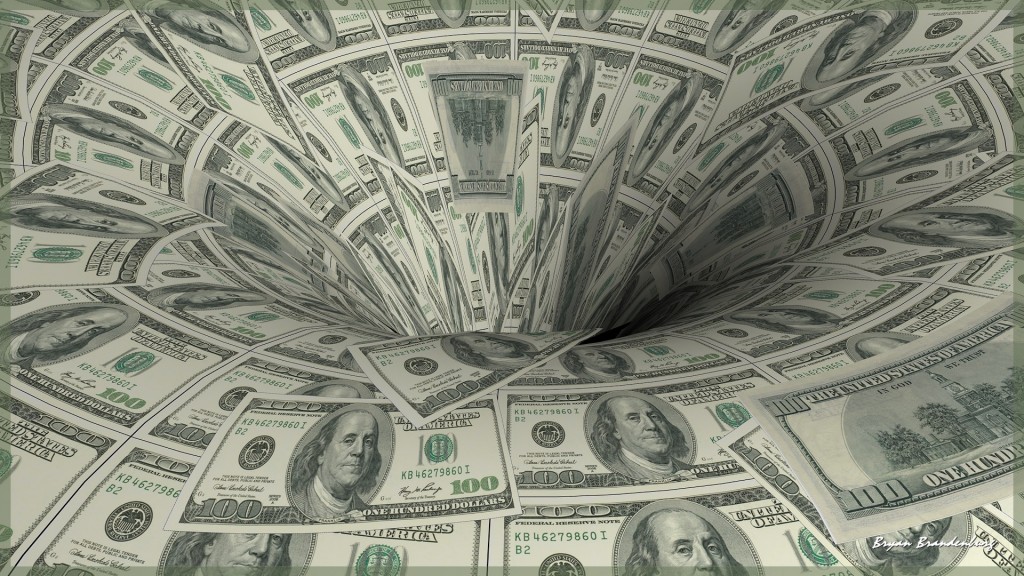“I enjoyed Stockman’s piece on Dec. 30th concerning the impact of the meltdown in the commodity industries. I think people are seriously underestimating the impact.” – New Year’s Day email from John Embry
I would like to point out that John and I always discuss a few pleasant topics as well as plot the demise of the global economy. On that note: Happy New Year everyone (Buon Anno a tutti).
I pointed out to John that Stockman’s analysis did not include any consideration of the amplification caused by derivatives on the destruction to the world/U.S. economy that is going to be felt from the price collapse of oil and basic industrial commodities. In fact, I would argue, though it’s next to impossible to prove, that the Fed spends a significant amount of time working to prevent any evidence of the brewing derivatives nightmare from reaching overt public view, in conjunction with the ECB, BoE and U.S. Treasury (the exchange stabilization fund).
An interesting event first brought at least to my attention by Zerohedge occurred on December 31. The Fed funds (FF) rate plunged significantly below the lower bound of the Fed’s .25-.50% FF rate to the rate set that day at .12% (source: Zerohedge, with my edits in black):
 The question is, why did this happen? To begin with, although it went largely unnoticed, the Fed also jacked up the interest it pays on bank excess reserves (IOER) from .25% to .50% at the same time it nudged up the FF rate. Let’s first review what Fed funds are and how they work mechanically.
The question is, why did this happen? To begin with, although it went largely unnoticed, the Fed also jacked up the interest it pays on bank excess reserves (IOER) from .25% to .50% at the same time it nudged up the FF rate. Let’s first review what Fed funds are and how they work mechanically.
The Fed funds is the mechanism by which banks who have cash in excess of what they need to meet reserve requirements lend these “excess” reserves to banks who might need a temporary loan in order meet reserve requirements. It is thus a system by which banks with extra liquidity make short term loans to banks who need liquidity. The Fed funds rate is the rate at which excess funds are loaned out. The FF rate is set in a competitive bidding process each day based on the supply of funds made available to lend and the demand to borrow these funds.
In theory the Fed is supposed to be able to “control” the FF rate by regulating the amount of ready-liquidity in the banking system. The Fed “adjusts” systemic liquidity using the reverse repo and repo “tools” (it can also adjust the minimum reserve ratio but this is rare). If the FF rate is headed above its target range, the Fed repos cash liquidity into the banking system. Conversely, it uses the reverse repo if the FF rate is headed below the lower bound of its target range in order to remove systemic liquidity.
 The IOER “mechanism” was put in place when the Fed began using its “helicopter” to dump printed money into the banking system. Note: half of the printed money either remained inside the banking system, which is a closed system, or went to the U.S. Treasury via transmission through the banking system; the other half of the printed money was injected into the mortgage banking system through Fannie Mae, Freddie Mac and the FHA via the banking system. The latter form of helicopter money ignited the mini-housing bubble and has led to mortgage and derivative products similar to the same products presented in The Big Short.
The IOER “mechanism” was put in place when the Fed began using its “helicopter” to dump printed money into the banking system. Note: half of the printed money either remained inside the banking system, which is a closed system, or went to the U.S. Treasury via transmission through the banking system; the other half of the printed money was injected into the mortgage banking system through Fannie Mae, Freddie Mac and the FHA via the banking system. The latter form of helicopter money ignited the mini-housing bubble and has led to mortgage and derivative products similar to the same products presented in The Big Short.
Prior to the Fed’s paying interest on excess reserves, banks were not earning any interest on their excess reserves at the Fed unless they lent out that money to other banks via the Fed funds mechanism.
The justification used by the FOMC in implementing the IOER was that it would enable the Fed to control the lower bound of the FF rate despite the flood of bank excess liquidity sitting at the Fed. This is because if the FF rate were to slip too far below the IOER rate, banks would keep their excess liquidity sitting in the excess reserve account rather than make those funds available for interbank lending. In the current framework for this interest rate management model, the FF target range is .25-.50% and the IOER is .50%. A further elaboration of this idea can be found here: LINK.
Without getting too theoretical, in theory the FF rate should be slightly below the IOER rate. This is because Fed funds are collateralized by Treasuries and triple-A mortgage paper. The IOER is “collateralized” by the Fed’s balance sheet, which has a tiny book value in relation to the size of the balance. In other words, on a “risk-adjusted” basis, a Fed funds loan is slightly less risky than a deposit sitting in a Federal Reserve account. Therefore, the Fed funds rate, everything else being equal, should be slightly lower than the IOER rate.
This brings us to the Friday event, when the Fed funds rate crashed below the .25% lower bound of the current FF rate policy, indicating that the amount of liquidity made available for Fed funds borrowing was well in excess the amount demanded to be borrowed and well in excess of the Fed’s ability to keep the FF rate at the .25% lower bound.
Secret blueprint for surviving the economic collapse (Ad)
Why did this occur? The simplest explanation is that the Federal Reserve is losing control of the amount of liquidity sloshing around the banking system and therefore is losing control of interest rates. Yet, on Friday, the FF rate was set not only significantly below the IOER rate but it also plummeted below the Fed’s “lower bound” rate. This means that some banks chose to lend to other banks at a rate that was significantly below the IOER rate. Bernanke’s Fed told us this would not happen.
It’s possible that this will be attributed to an end of year technical glitch. As Zerohedge points out in the article linked above, the FF rate dropped at month end every month in 2015. But it remained within the Fed’s lower bound of 0%.
The Fed could have prevented this from occurring if it had removed significantly more than $105 billion in liquidity from the banking system when it nudged up the FF rate (using the reverse repo tool). In fact, some estimates were that the Fed would need to remove up to $1 trillion in reserves in order to maintain the lower bound of the FF rate target range.
 There must be some reason that the Fed did not remove more liquidity from the system. This line of reasoning further points to the probability something might collapse if the Fed were to remove the amount of liquidity from the system necessary to keep the FF rate from dropping below the lower bound. It also suggests that the Fed is losing control of its ability to manage the massive liquidity monster it has created.
There must be some reason that the Fed did not remove more liquidity from the system. This line of reasoning further points to the probability something might collapse if the Fed were to remove the amount of liquidity from the system necessary to keep the FF rate from dropping below the lower bound. It also suggests that the Fed is losing control of its ability to manage the massive liquidity monster it has created.
I want to close out this post with a quote from someone (I’ll refer to him as “MC”) with whom I was discussing this subject yesterday afternoon. We both agreed that the Zerohedge post, while informative, was missing some key ingredients in its description of what had occurred. It was MC’s comment below that led me to meditate further on this ordeal and the more I ponder the “ingredients” which went into Wednesday’s events, the more I believe MC is on the right track here:
If I had to choose between excess liquidity or a bank that can’t afford a rate in the channel [i.e. the Fed fed funds target range] it would be the latter. But really? [The Fed] must be going to extreme measures to avoid any appearance of stress somewhere in the system.
Flexing my conspiracy theory brain cells, it must be something big like JPM where it is big enough to have a real demand for funds where these small differentials [i.e. the difference between the .25% lower bound for the FF rate and the lower rate of .12 at which the FF rate was set on Wednesday Dec 31] could matter and is systemically important and they don’t want attention drawn, yet… Like going to the discount window, etc
You can read more from Dave Kranzler at his site InvestmentResearchDynamics.com


The proof that money controls is that the richest and greatest debtor nation on earth won’t federalize the Federal Bank that controls it’s money supply. In the entire Senate and House of Representatives there is not one that loves his country more than money and fears those who control it.
when the unfed is declared dead a thousand years of peace will follow.